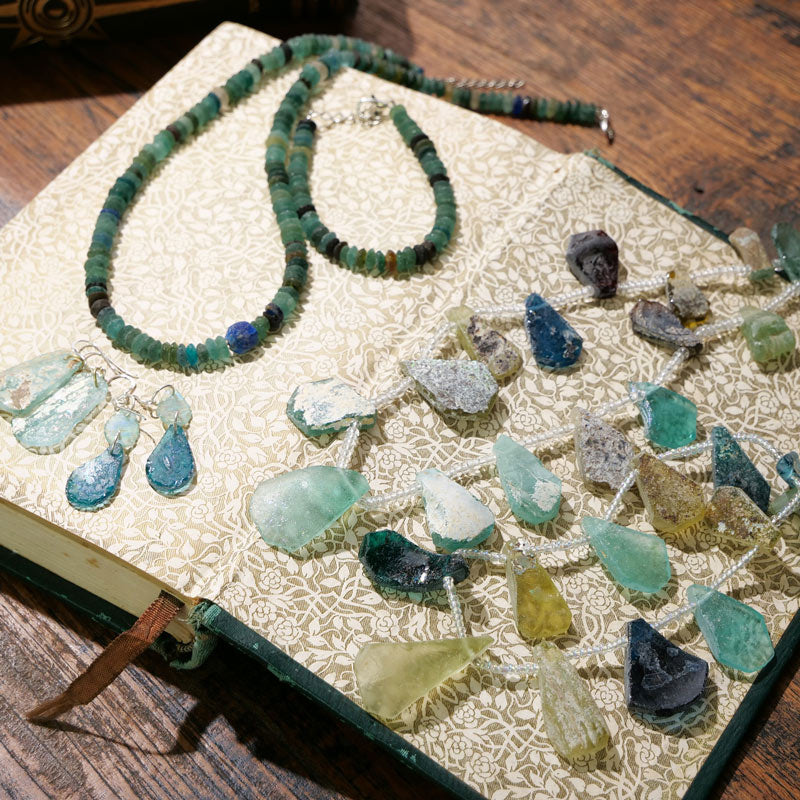MALAIKA
Roman Glass Earrings
Roman Glass Earrings
SKU:acc1223-002
Couldn't load pickup availability
Product Description: These simple yet elegant earrings feature Roman glass fragments, crafted during the ancient Roman to Roman Empire periods. Each piece is delicately designed to showcase the natural beauty and sophistication of the thin glass shards. Some pieces exhibit a stunning iridescence, adding to their unique charm. The slight variations in color and shape between the left and right earrings enhance their romantic appeal, creating a beautiful adornment for your ears.
Specifications:
- Origin: Afghanistan
- Estimated Production Period: 1st Century BCE – 2nd Century CE (for the base glass)
-
Sizes:
- A: 21mm × 9mm
- B: 29mm × 17mm
- C: 20mm × 16mm
- D: 22mm × 10mm
- E: 26mm × 16mm
- F: 22mm × 15mm
- Note: Measurements are for the larger glass pieces.
- Materials: Roman Glass, 925 Silver (hooks), Metal (jump rings)
-
Special Features:
- Items 02, 03, and D have additional holes at the bottom of the parts.
- The parts are attached sideways to display the front of the glass when viewed from the side. The earrings are beautiful as they are, but if you prefer the front to face forward, you can connect another jump ring or gently twist the top earring part by 90 degrees.
- As these are antique items, they may have scratches, cracks, or chips.
- The iridescent parts of ancient glass may flake off, so handle with care and avoid vigorous cleaning.
- Note: The actual product may appear slightly different from the photographs due to lighting conditions and the use of illumination during photography. The colors are depicted as seen in a brightly lit environment.
About Roman Glass:
From the 1st century BCE to the 4th century CE, glass craftsmanship flourished in the Roman Empire, producing many glass items for trade. These glass products, made along the Mediterranean coast, spread across a vast region from Northern Europe to Japan. Initially, most glass was opaque, but by the 1st century CE, transparent glass became popular. Beads made during this period were highly valued as jewelry, while fragments from cups and pitchers, often found in excavations, remain more affordable today.
Share



























